What is Queso Blanco and how to make it
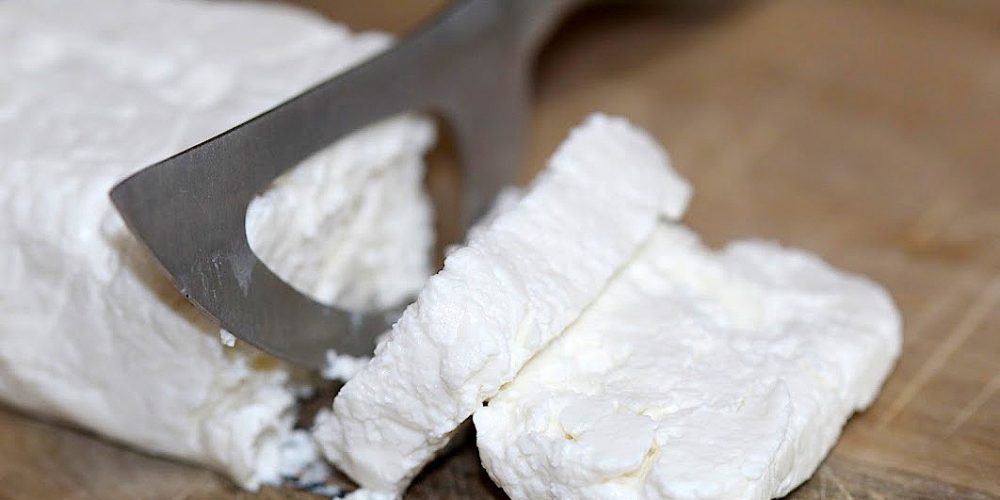
Queso Blanco in Spanish means white cheese. There are a number of cheeses that appear white, like cottage cheese, quark, or feta. One of the main reasons why some cheeses are whiter than others has to do with the amount of beta-carotene in the milk.
The level of beta-carotene in milk depends on the amount of fresh grass a cow consumes, and also on the species and breed. Goats and buffaloes, for example, convert beta-carotene right away into vitamin A, which results in a very white milk. It is believed that native cows from Central and South America produce a white milk for the same reason, hence the term Queso Blanco.
Queso Blanco in Central and South America is produced under many different names depending on the region. It is generally consumed fresh and often accompanied by fruit or fruit sauces.
Check out our post on How to Make Cheese at Home to learn the art of making cheese. It’s a fun project for everyone.
For easy homemade cheese recipes check out our Cheese Making Recipes page.
If you are interested in the world of cheese making, visit our cheese Resource page and our How Cheese is Made post.
We review and suggest Cheese Making Kits here if you would like to get started with making cheese.
Enjoy!!!
How to make Queso Blanco at home
Queso Blanco comes in 2 types and both are easy to make at home.
Type 1: Using starter culture and rennet
Type 2: Using direct acidification
Type 1: Using starter culture and rennet
This is the main type and comes in 2 versions:
Queso Fresco: Consumed fresh (option 1 at the end of the recipe)
Queso Presna: Vacuum packed and aged (option 2 at the end of the recipe)
Ingredients:
- 2 L/ 2 Qt of whole or 2% milk, from the farm or store bought
- ¼ tsp of freeze dried starter culture or 2 tbsp of buttermilk
- Half a rennet tablet or half a tsp of liquid rennet, dissolved in a ¼ cup of cold water
- Half a tsp of salt of your choice
Tools:
- Stainless pot
- Whisk or ladle for stirring
- Cheese cloth
- Knife
- Cheese mould (optional)
- Pasta strainer
- Whisk
- Large spoon
- 2 cutting boards (not necessary if you have a cheese mould)
Procedure:
- Warm the milk to 32 C/ 90 F
- Stir in the culture, if you are using freeze dried culture wait 20 minutes before proceeding to the next step. If using fresh buttermilk, proceed to the next step right away.
- Make sure the milk is still at 32 C/90 F. Warm it up if necessary. Stir in the rennet for 2 minutes, then make sure the milk stays still. Take note of the time.

Adding Culture
- After 35 to 40 minutes the milk should have coagulated and should be firm. It’s now called curd.
- With a knife cut the curd into approx. half inch squares.
- With a whisk gently stir up the curd and break it apart.
- Let the curd firm up in the pot by stirring it with a spoon every 20 minutes.
- Ideally the curd should stay at 32 C/90F. You might have to warm it up if necessary.

With a knife cut the curd into approx. half inch squares
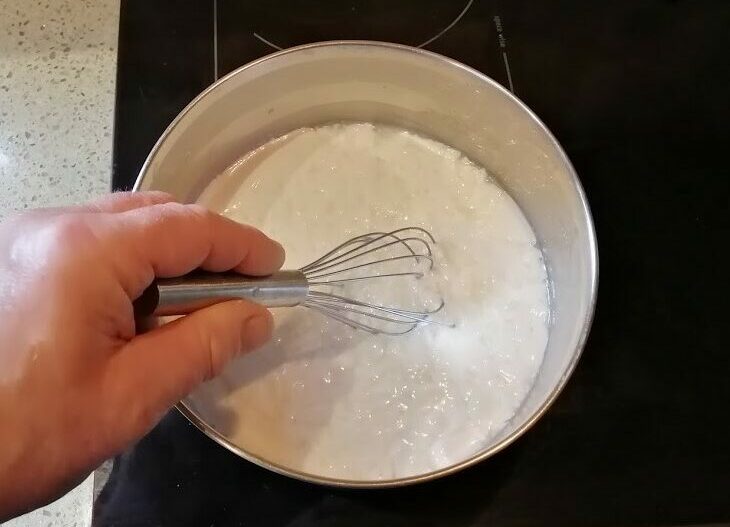
With a whisk gently stir up the curd and break it apart
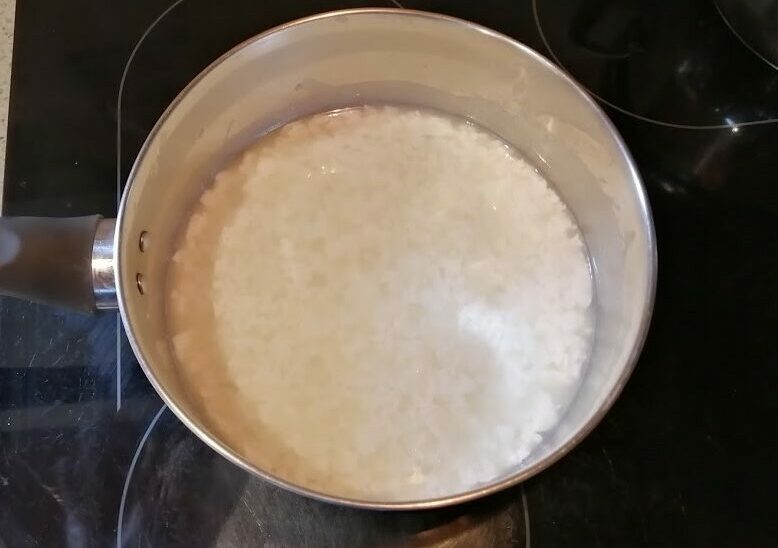
Let the curd firm up in the pot by stirring it with a spoon every 20 minutes
- Drape your pasta strainer with the cheese cloth
- 2 hours after having added the rennet gently pour the curd into the cheesecloth.
- Once all the whey has drained from the cheese (takes about 30 minutes), put the cheese back into the empty pot or a bowl.
- Add the salt and gently mix it in, best is with your clean hands.
- Now put the salted curd into your cheese mould. If you don’t have a cheese mould, place the curd back into the cheesecloth.
- If using a cheese mould add some weight (like a water bottle) to press the curd. If you are using cheesecloth, place it between 2 cutting boards and add some weight like a water bottle or a pail with water.

Gently pour the curd into the cheesecloth

Add the salt and gently mix it in
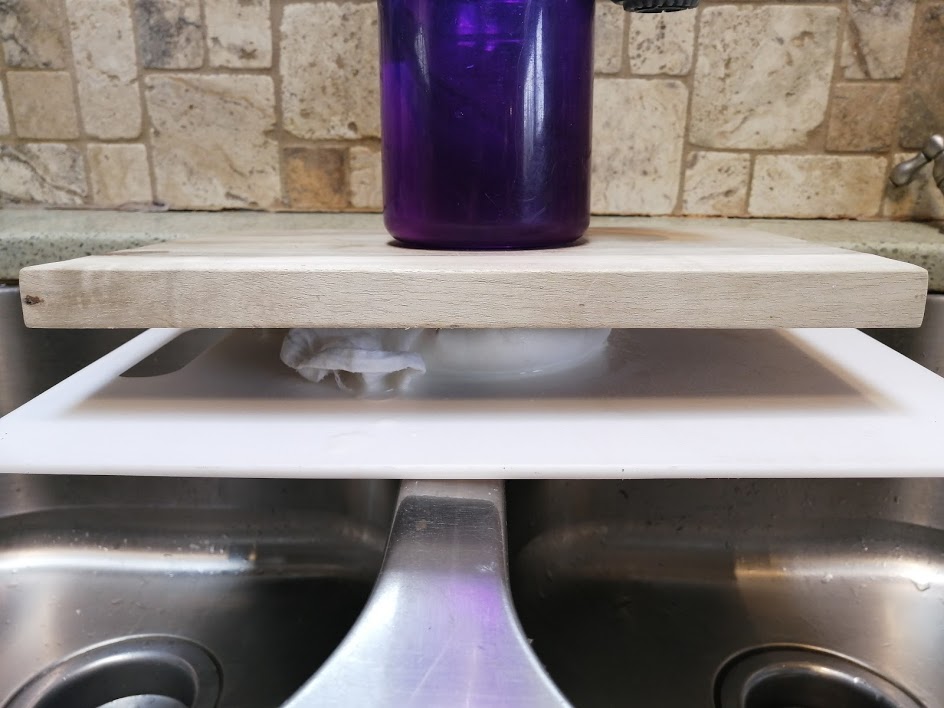
add some weight
- Let the cheese sit in the mould or cloth for 16 hours at room temperature
- Unpack the cheese from the mould, or the cheesecloth. Be careful not to rip the cheese when peeling the cheesecloth off. If you don’t have a cheese mould you can form the cheese that came out of the cloth into a square shape.
Option 1
Queso Fresco: Slice the cheese up and consume right away. You can easily keep it for up to two weeks in a tupperware in the fridge.
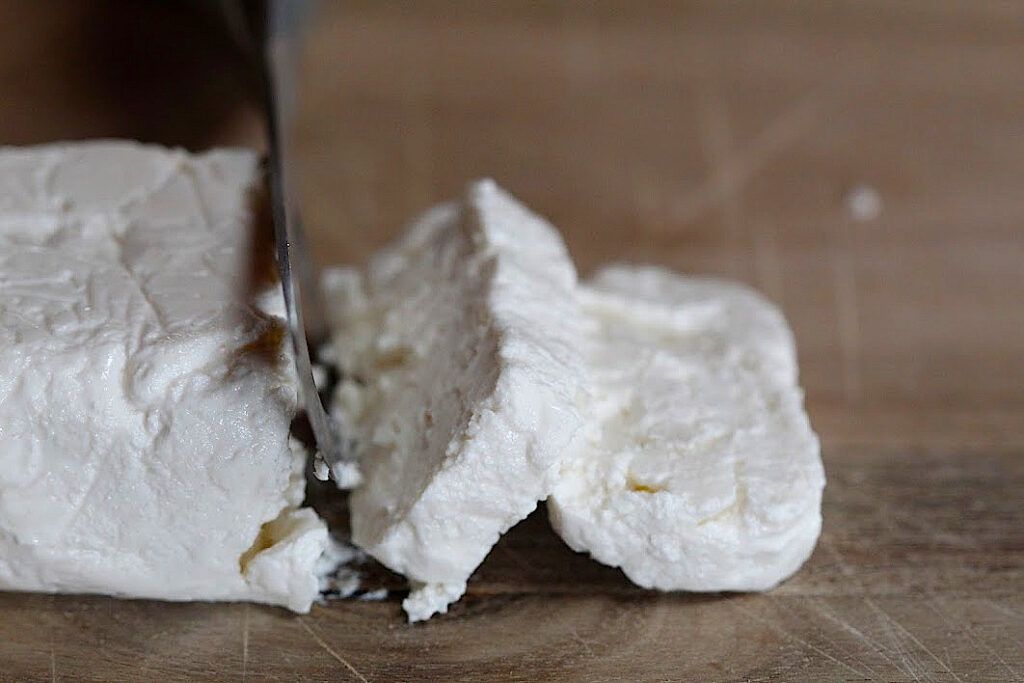
Option 2
Queso Presna: vacuum pack the cheese and store in a cool place for 4 weeks or longer. An ideal cool place should have about 15 C/ 59 F. If you don’t have a cool place, you can age the cheese in the fridge. The aging will be much slower so you want to give it 2 months.
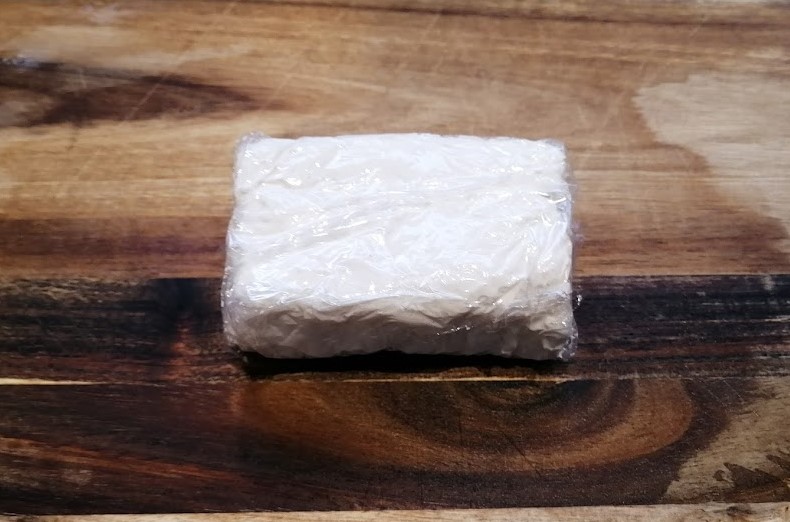
Type 2: Using direct acidification
This type of Queso comes in 2 versions as well:
Regular Queso Blanco: sliceable
Queso Crema: creamed
The principle of production is the same as for Ricotta and Paneer, with a slight variation. It is easy to make at home.
1. Regular Queso Blanco
Ingredients:
- 2 L/ 2 Qt of whole or 2% milk, from the farm or store bought
- Approx. ⅔ of a cup of vinegar or lemon juice. The amount varies a bit according to the type of milk and the type of acid used, so you will be adding it until the milk reacts.
- Half a tsp of salt of your choice
Tools:
- Stainless pot
- Cheese cloth
- Cheese mould (optional)
- Pasta strainer
- Large spoon
- 2 cutting boards (only needed if you don’t have a cheesecloth)
Procedure:
- Slowly start heating your milk while stirring it. Keep the vinegar close by.
- Use a reliable thermometer. Once the milk reaches 90 C/ 190 F, slowly add vinegar or lemon juice while constantly stirring.
- Once the milk is acidic enough, it will separate. Curd will float and yellowish whey will become visible. Instantly stop adding vinegar or lemon juice.
- Let the curd firm up in the pot by stirring it with a large spoon for 2 minutes.

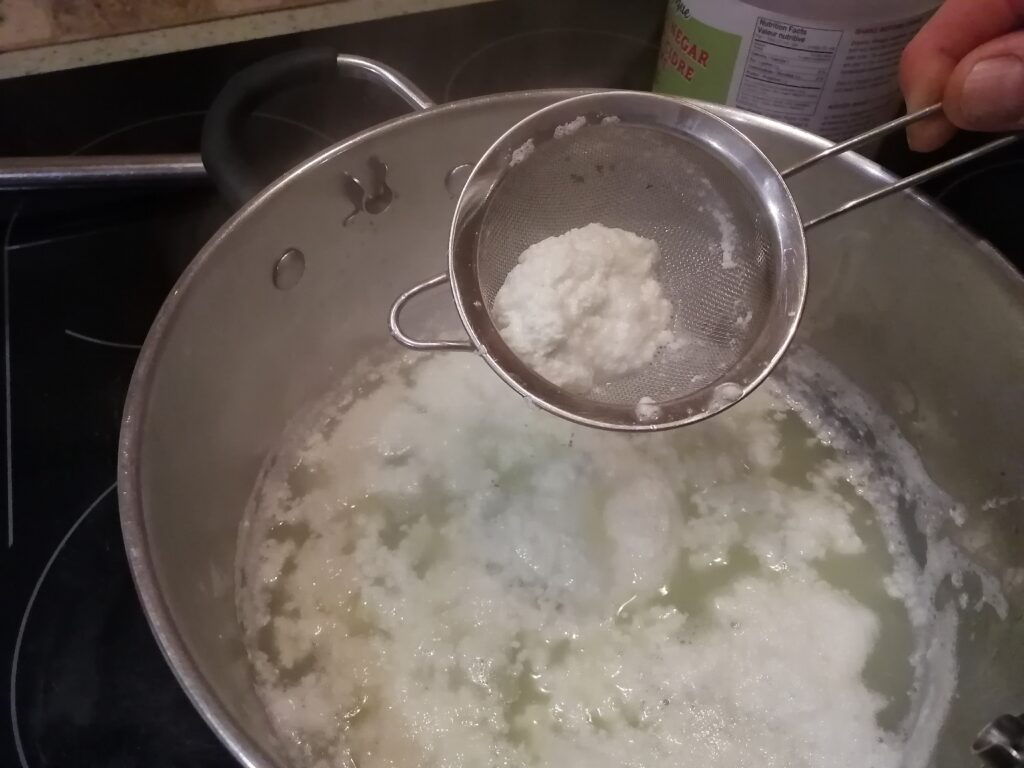
- Drape your pasta strainer with the cheese cloth.
- Gently pour the curd into the cheesecloth.
- Once all the whey drained from the cheese, put the cheese back into the empty pot
- Add the salt and mix it in. Use a spatula or your gloved hands (it’s hot).
- Now put the salted curd into your cheese mould. If you don’t have a cheese mould, place the curd back into the cheesecloth.
- If using a cheese mould add some weight (like a water bottle) to press the curd. If you are using cheesecloth, place it between 2 cutting boards and add some weight like a water bottle or a pail with water.

Gently pour the curd into the cheesecloth

Add the salt and gently mix it in

add some weight
- Let the cheese sit in the mould or cloth for 16 hours at room temperature
- Unpack the cheese from the mould, or the cheesecloth. Be careful not to rip the cheese when peeling the cheesecloth off. If you don’t have a cheese mould you can form the cheese that came out of the cloth into a square shape.
Option 1
Slice the cheese up and consume right away. You can easily keep it for up to two weeks in a tupperware in the fridge. It is often consumed along with fruit or fruit sauces.
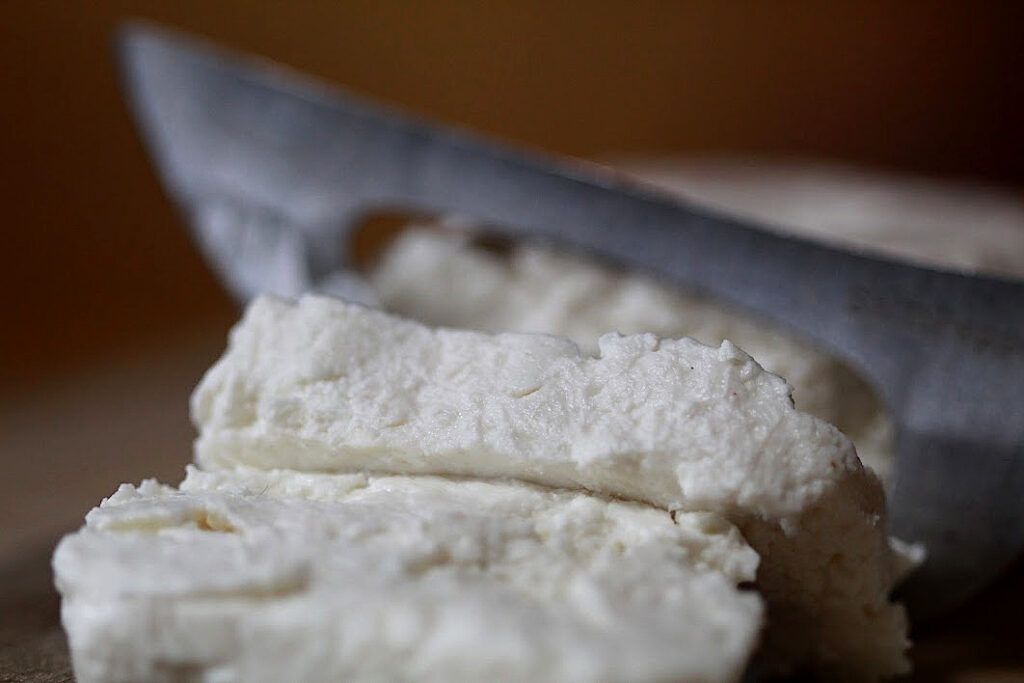
Option 2
Vacuum pack the cheese. This way it will last many weeks. You can also freeze it. Keep in mind that this cheese is not meant to age. It has no live bacteria in it.

2. Queso Crema
Ingredients:
- 2 L/ 2 quarts of whole or 2% milk, from the farm or store bought
- Approx. ⅔ of a cup of vinegar or lemon juice. The amount varies a bit according to the type of milk and the type of acid used, so you will be adding it until the milk reacts.
- ¼ cup of whipping cream or coffee cream
Tools:
- Stainless pot
- Whisk or ladle for stirring
- Cheesecloth
- Pasta strainer
- Large spoon
Procedure:
- Slowly start heating your milk while stirring it. Keep the vinegar close by.
- Use a reliable thermometer. Once the milk reaches 90 C/ 190 F, slowly add vinegar or lemon juice while constantly stirring.
- Once the milk is acidic enough it will separate. Curd will float and yellowish whey will become visible. Instantly stop adding vinegar or lemon juice.
- Let the curd firm up in the pot by stirring it with a large spoon for 2 minutes.


- Drape your pasta strainer with the cheese cloth.
- Gently pour the curd into the cheesecloth.
- Once all the whey is drained from the cheese, put the cheese into a food blender or food processor.
- Add the cream and blend until smooth.

Gently pour the curd into the cheesecloth

Add the cream to the cheese

Blend until smooth
- Transfer into a bowl and refrigerate.
- Once cooled down, use as a spread, in salad dressing, sauces, or on baked potatoes. It also goes well with fruit, honey, or maple syrup. Use salt to taste.
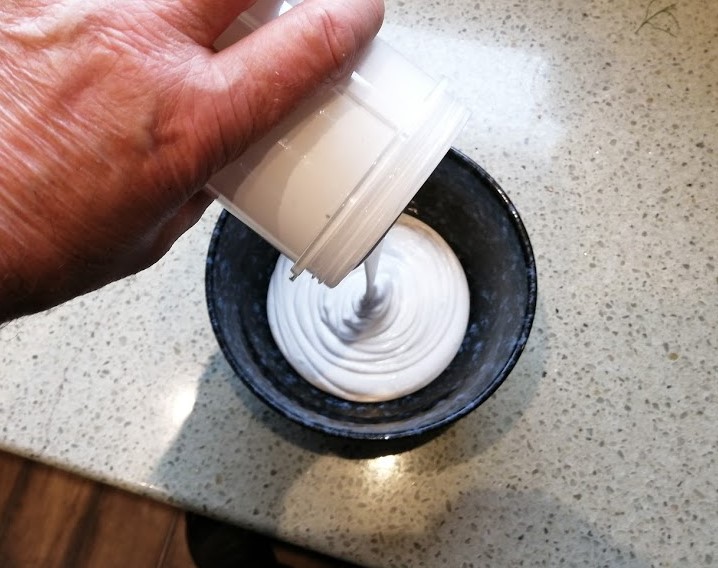
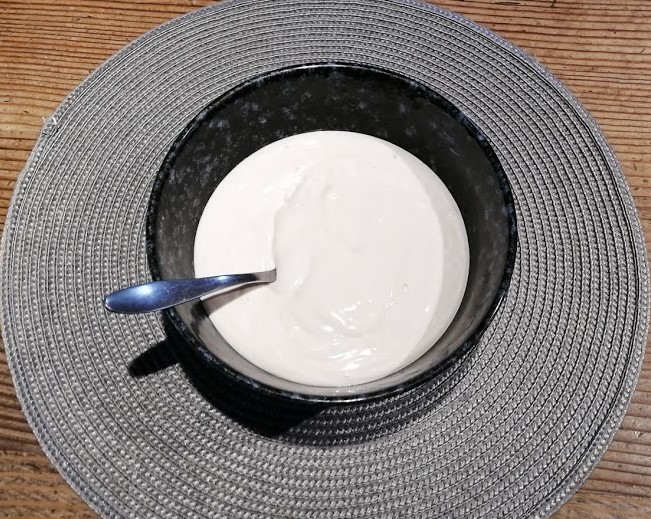
Troubleshoot
- The milk coagulates before you add the acid. This can happen when your milk is not fresh. The older the milk is, the more acidic it gets. If this happens, don’t worry about it. As long as your milk tasted fine to begin with, your paneer will be fine as well.
- You added a lot of acid and the milk didn’t coagulate. It only made a very fine curd, which can hardly be scooped. This can happen to goat milk. You can pour the curd into a very fine meshed cloth, trying to retrieve as much of the fine curd as possible. This can also happen to milk that came from an unhealthy animal. In the article about “what to know about cheese”, I talk about somatic cell counts. A high somatic cell count can cause this problem in your paneer.
- The queso tastes like vinegar. You used too much vinegar. Add it very slowly and at the first sign of coagulation stop adding the vinegar. If you still detect a vinegar taste, use citric acid instead.
Leave us a comment below about how your recipe turned out. Feel free to suggest ideas or what you would like to see in our recipes.
Enjoy!!!




